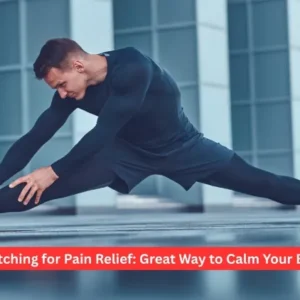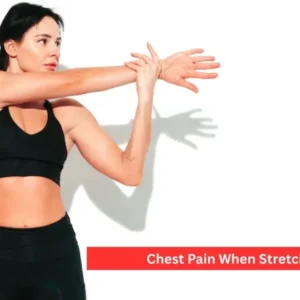High-Impact vs Low-Impact exercises are one of those exercises used to gain certain targets. Strength training exercises are those which impose high magnitude forces on the body, which are multiples of body weight, and directly influence joints as well as the biomechanics of dynamic bodies. To choose the right type of exercises for yourself, you should carefully define your requirements as well as objectives.
Each of the types of exercise is special in some way and can be modified for varying abilities, physical conditions or feelings that people have. This article will help explain the differences and the qualities of both high-impact and low-impact exercise so that you can be able to achieve a good balance between the two secrets to good health and well-being. Therefore, you need to consider undertaking high-impact exercises.
Low-impact Exercises
As the name suggests, low-impact exercises are gentle on your joints, which are the bones in this case, thus suitable for people who have joint problems. Low-impact cardio exercises are suitable for all ages and classes of people, and it is an effective workout plan. These activities include those exercises in which both feet of the body are not off the ground at any one time. Common low-impact exercises include:
- Walking: One of them which must be considered the least stressful forms of workouts. It can be performed almost anywhere, does not need any equipment, and can be, to a certain extent, modified according to the least likely physical abilities of family members. It is very essential in enhancing the odds of good heart health, enhancing muscles and even boosting a satisfactory mood.
- Swimming is a good aquatic physical activity with little stress on the joints, muscles and bones since it targets all muscles in the body. FLOATING aids in fitness, developing muscular strength while at the same time releasing energy, and flexibility without the pressure on joints.
- Fitness workout: Fitness workout also combines aerobics, inflex, and stretching, which enhances muscle strength and mobility. The low impact characteristic makes it easy on the joints and can be easily adapted to suit the intensity, duration and flexibility of the program to be followed as recommended for each person’s ability.
- Fitness Activities: Cycling is one of the most effective ways of working out, especially for those who have a problem with their knees or ankles. Cycling, regardless of whether it is on a stationary bicycle or a non-stationary bicycle. It assists in the development of leg muscles and thus aids in enhancing endurance.
- Elliptical cardio: Today, some models of equipment are designed to imitate running but with much less stress put on the joints. It is useful for the development of a good cardiovascular system and the muscles of the lower part of the body.

Benefits of Low-Impact Exercises
- Especially Suitable for First Timers: Another reason that makes Bosu Ball exercises ideal is the fact that the workout is relatively easy for first timers. These exercises include motions that do not stress the resiliency of the muscle fibres to absorb the force of the impact with stiff surfaces.
- They are effective means of raising your fitness level while avoiding stress on the body. It is easier to progress towards gaining strength and building endurance in the muscles at a steady pace.
- Physical rehabilitation: These exercises are especially suitable for any sporting personality who has gotten an injury or is in the process of rehabilitation. It helps to offer the opportunity for the person to continue exercising for fitness, but not aggravating the injury. Some of the forms of exercises that physical therapists may incorporate during the rehabilitation process are as follows.
- Low Impact Exercises: The gentle exercises are the best exercises for light days. They contain a modality that allows one to perform relatively mild exercises to help in easing on the signs of soreness after the more rigorous workout sessions. This makes them a useful component when it comes to planning out an effective and efficient fitness program.
High-Impact Exercises
On the other hand, high-impact exercises will be characterised by even forcing movements on the joints as well as calling for higher capacity on the body. Running, for instance, is more intense than walking in terms of Cadence and impact forces involved. Examples of high-impact exercises include:
- Jogging: Jogging is also an intense aerobic activity that ensures that your body is subjected to forces that are three times its weight per a single step. It is an effective form of exercise that enhances cardiovascular endurance and burning of calories while at the same time enhancing the lower body muscles, but it involves the use of a lot of pressure on your joints, especially the knees and feet.
- Winter sports: Skiing involves many movements full of strength, quick and brisk movements, which sometimes at times involve impacts on the legs. It involves almost every part of your body and can be considered a good way of creating fun for individuals who feel bored while exercising.
- Gymnastics: A sport that most of the time involves a lot of activity in learning strength, balance and coordination is known as gymnastics.
Overwhelmingly, it became clear that it is a high-impact activity and has the potential to revolutionise the training of athletes. HIIT: HIIT involves descriptive intense exercise that increases one’s heart rate to its peak. Such exercise routines can be described as activities that comprise adequately limited and separated into sections of high and low intensity exercise and rest.
Benefits and Risks of High-Impact Exercise
- Maintain Healthy Bones: Weight bearing exercises which inflict high impacts on the bones will help in the building up of the bones necessary for a good skeletal system. The pressure that is put on the bones during exercise subjects the bones to tension and calls for improvement in the density of the bones.
- Injury Risk: With the help of these exercises, individuals are exposed to different sorts of injuries, among which include stress fractures and chronic joint injuries. This makes such high-impact exercises very harsh on the muscles and bones, and over time, may cause injuries because of poor form and technique.
- High-intensity workouts: Several exercises raise the pulse rate rapidly, thereby serving as effective cardio exercises. But at the same time, they also enhance the chance of developing joint pain and injuries in cases of certain diseases.
In terms of injury prevention, the correct techniques must be used during the high-impact exercises to reduce the risk of injury. Having a personal trainer or a strength coach also has the effect of making certain that the exercises are done correctly. The selected sport can cause some kind of injuries, and with the help of a coach, the correct form, technique, and gradual advancement should be used.

Benefits of Combining High-Impact vs Low-Impact Exercises
High-Impact vs Low-Impact Exercises: It is also important for one to balance, or perform both high and low impact exercises in the fitness program to enhance fitness and performance. It then enables one to get the benefits of both kinds of exercise and, at the same time, minimise contractile injuries.
- Preserving Joints: Besides, low-impact exercises play a crucial role in enhancing the capability of high-impact exercises by strengthening and enhancing the flexibility of the joints. Dominant dynamic workouts like team games and touch rugby are enhanced and not hindered by activities such as yoga and stretching since they increase joint stability and circulation of blood, which minimises the likelihood of injury from impacted movements.
- Recovery: It is recommended to perform low-impact activities to fatigue to help with the recovery process of bodies that have undergone high-impact training. It also helps to prevent incidents from happening and to enhance efficiency by enhancing muscle recovery and decreasing muscle stiffness.
It is found that low-impact exercises like Yoga and stretching could also be beneficial in strengthening the core muscles and thereby help to maintain a correct posture and form during the intense exercises or workouts. A stable and strong core helps in improving the movement patterns and preventing the occurrence of injuries.
Deciding What’s Best for You
As for the techniques of high-impact aerobics and low-impact aerobics, it is significant to comprehend that the choice of these exercises depends on the individual needs and aspirations. Here are some tips:
- A professional trainer: They will advise the best exercise that suits your body and the right technique to be used in exercising to avoid developing sores all over your body. They also make arrangements on how you can exercise depending on the interests that you have or your current health state.
- Assess your fitness needs: Whether a gentle jog in the morning is sufficient, vigorous exercise to give the cardiovascular system a good beating or a moderate amount of both. Furthermore, one should understand present fitness status, weaknesses, ailments or chronic diseases and best fitness goals.

Conclusion
High-impact exercises as well as low-impact exercises have their advantages, and in a way, the choice depends on the person’s goal. This will help them to know their nature and what would be suitable for them regarding choice. Booking a personal trainer will help you in realising the best possible positions in executing exercises to avoid any injuries, and at the same time, make your fitness transformation smooth and efficient.
Extreme endorphin exercise is also needed to achieve total fitness. Therefore, the selection of the activity depends on the following factors: one’s fitness goal, physical status, and any past injuries. It is quite advisable to integrate both types of exercise alongside enlisting the services of a fitness trainer to design a proper workout program that will be efficient in your fitness training and will also eliminate the dangers of experiencing a breakdown.
Frequently Asked Questions
1. What’s the difference between high-impact and low-impact exercises?
The first type of workouts affects the joints, such as running and the second type of workouts, for example, walking and swimming.
2. Who should do low-impact exercises?
They are suitable for beginners, elderly people or anyone who experiences joint pain or any form of injury.
3. Are high-impact exercises risky?
They can be if done in the wrong way or without adherence to good form—it is always safer to seek advice from a trainer.
4. Why mix both types of exercises?
Training both serves to enhance fitness, help in the recovery process and decrease on/off-season fluctuations, while the other enhances cardiovascular fitness, helps in muscle building and prevents injuries.







